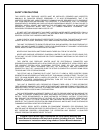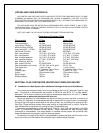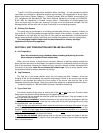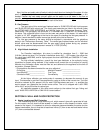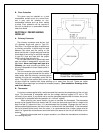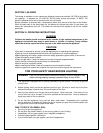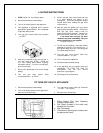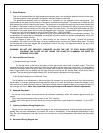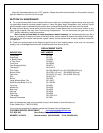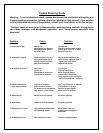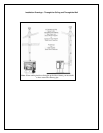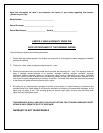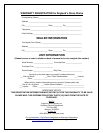
C. Glass Windows
This unit is manufactured with high temperature ceramic glass, and substitute materials should not be used.
This stove should not be operated if the glass is cracked, broken or removed.
The glass/frame assembly shall be replaced as a complete unit as supplied by the manufacturer. The
replacement of the glass should done by a licensed or qualified service person. This stove has a middle and two
side glasses that mount inside the door frame. The glass can be changed by removing the window bracket that
is located in the bottom inside of the door frame. The bracket can be removed by raising it up and removing it
through the small channel located on the lower left side of the door frame. The new glass with gasket can then
be placed in the proper space and the channel snapped back into place. The replacement glass is designed for
our units only and can be ordered by calling (Parts Orders Only: 1-800-516-3636).
When the stove is first started, the glass will fog up with condensation from the combustion process. The
condensation will evaporate and disappear as the glass and stove reach full operating temperature, which will
usually take two to three minutes.
If you happen to see a grey film or haze forming on the inside of the glass, it should be removed
immediately; this could be from the logs not being located properly and too much flame hitting them. The haze
can be removed in the early stages, but is permanent if left on too long. The logs should be all the way to the
back and left inside the stove.
WARNING: DO NOT USE ABRASIVE CLEANERS. ALLOW THE UNIT TO COOL DOWN BEFORE
CLEANING THE GLASS. DO NOT ABUSE THE GLASS BY SLAMMING THE DOOR OR
STRIKING THE GLASS.
D. Valve and Burner Controls
1) Variable Heat Input Controls
On the gas valve, to the left of the green or black gas control valve knob is another control. This is the
variable heat input control that continually varies the gas going into the stove from low to high. The high setting
allows the maximum amount of gas to enter your stove, and is used for cold winter nights or when you desire to
heat a larger space; the low setting may be used during the spring and fall months when not as much heat is
required. The low setting gives approximately 50% of the heat as compared to the high setting.
2) Air Shutter Adjustment on the Burner Tube
The air shutter is an adjustment on the burner tube. Its purpose is to control the amount of air that enters the
burner tube. In concept, opening the shutter permits more air to enter the tube and causes the flames on the
main burner to be bluer and burn cleaner. Closing the shutter has the opposite effect, and causes the flame to
burn orange and dirtier. Note: Only a qualified service technician should make Air Shutter adjustments.
E. Seasonal Shut-down
At the end of the season, the stove should be shutdown completely, which will conserve gas and save you
money.
First, move the thermostat control or lever to the “OFF” position.
Then, shut off the gas to the main burner by turning the gas valve control knob fully clockwise
→ to the “OFF”
position.
F. Lighting the Heater During Regular Use
Simply turn up the switch on the wall thermostat to the desired temperature. If the thermostat temperature is
greater than the room temperature, the heater will come on immediately. If the thermostat temperature is less
than the room temperature, the main burner will not come on until the temperature falls below the thermostat
setting.
G. Shut-down During Regular Use




